Last Updated on: 20th December 2024, 12:29 pm
The Fenghuang Ancient Town area has plenty to do and see. One can spend several days in town, exploring its hidden spots and cobblestone backstreets. But if you purchase Fenghuang’s ¥168 ‘through ticket,’ you’ll notice that it includes a few places well outside the city itself: Qiliang Cave and the Southern Great Wall. But is going the extra distance worth it?
Both attractions can be visited within a single day. And while the two may seem to share little in common on the surface, there is a familiar theme which unites them: historical struggles between imperialist rulers and Hunan’s ethnic minorities.
Unable to come across much info before my day trip, I had little idea of what to expect. But ultimately, I ended up pleasantly surprised by both destinations. Getting from place to place, though, was another matter.
Note: Google is banned in China. To see this map during your trip, you’ll need to use a VPN. Learn more at the end of the article.
The Qiliang Cave
Situated about 20 minutes outside of central Fenghuang, Qiliang Cave is a place where unique rock formations and local history converge. In total, the cave stretches out to over 6,000 meters in length, with an organized tour lasting a couple of hours. That’s right – a tour guide is required to visit the cave, even if you get there on your own.
Arriving at the cave by public bus (more below), I got there just as a tour was about to start. Unsurprisingly, I was the only foreigner in the crowd, but the guide warmly welcomed me with the assistance of a translation app. While I’d have no idea of what she’d be saying for the next couple hours, that didn’t stop me from appreciating what I saw.
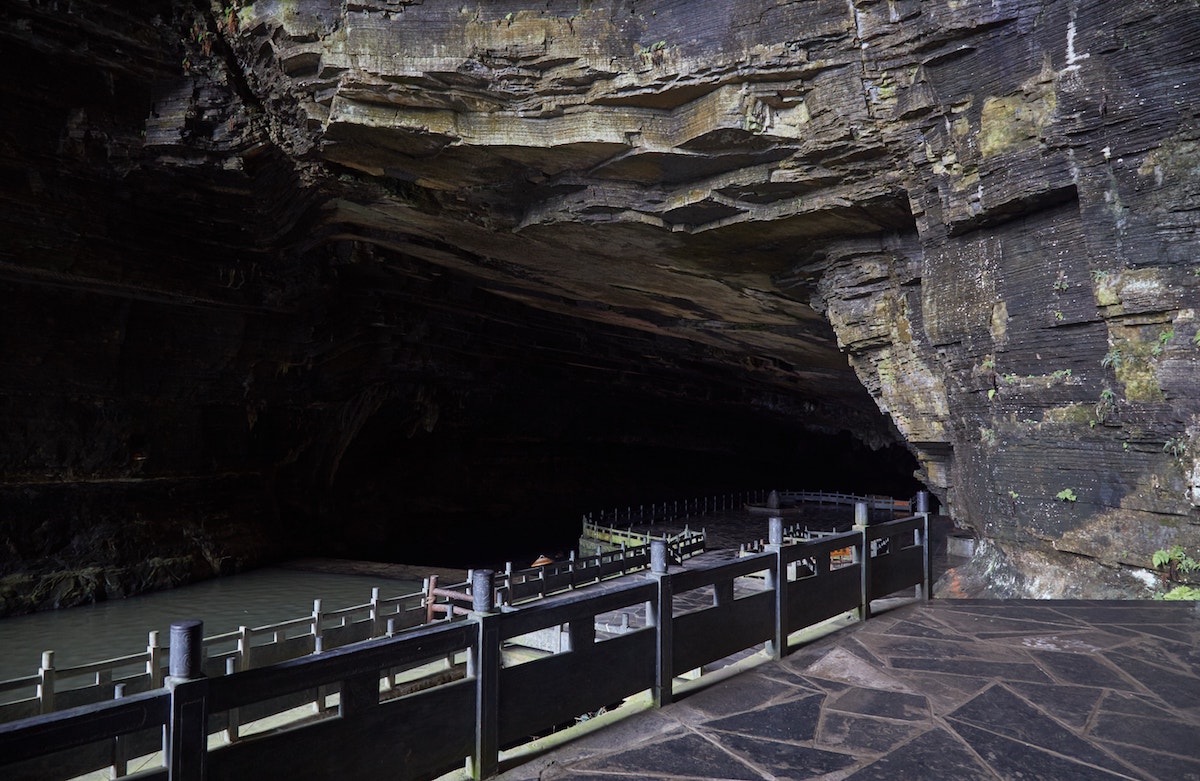
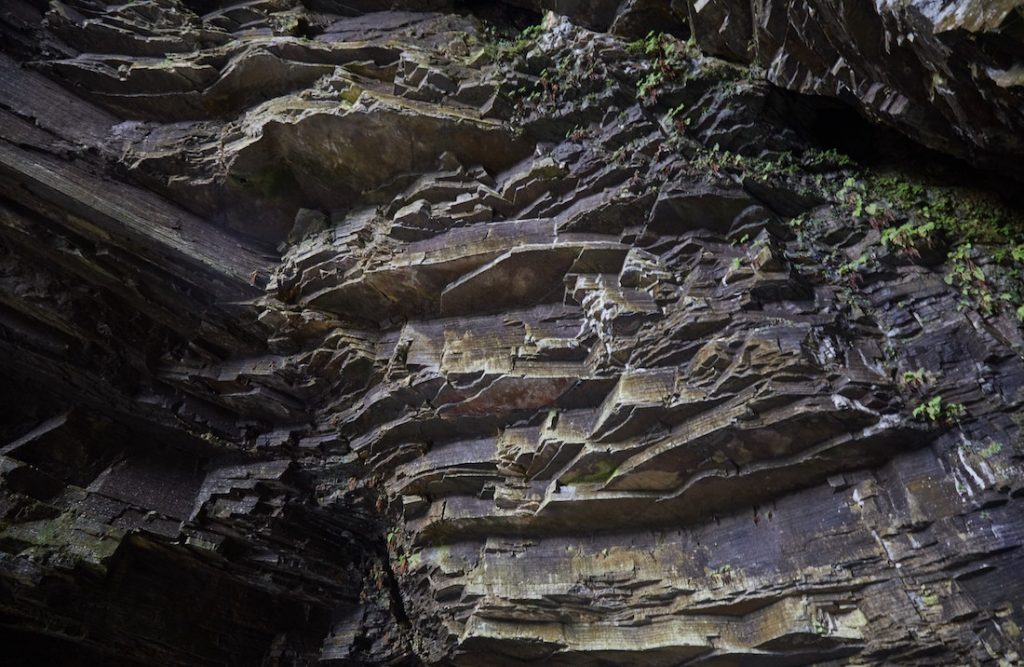
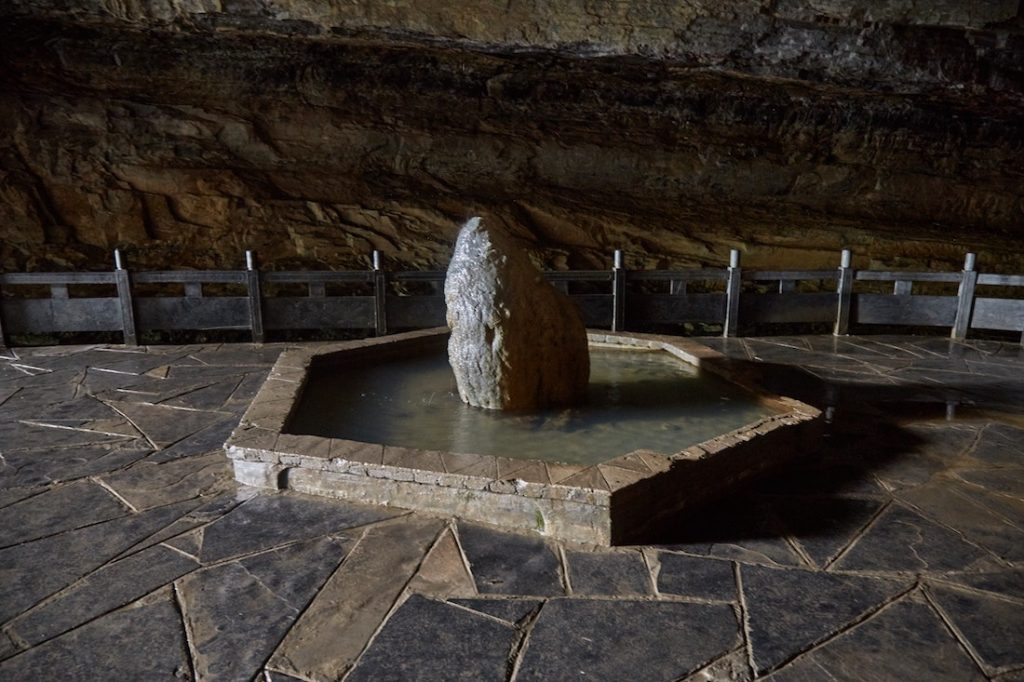
The cave entrance is 50 meters high and around 20 meters wide. Locals even say that it resembles the mouth of a dragon. And flowing into its opening is an underground river, which we’d end up following for much of the tour.

As mentioned, the cave and its surroundings were once the scene of intense fighting. It happened during the Qing dynasty when imperial rulers were struggling to control the local ethnic minorities such as the Tujia. When a local Tujia ruler named Heche staged a revolt against Qing officials, they sent over commanders to quell the uprising. But the Tujia managed to defeat them, and according to the story, just 36 people managed to kill 9,000!
But how? According to local legend, the Tujia did so with the help of three magical weapons, one of which was called ‘The Lotus Umbrella.’ The weapons, however, were later destroyed, and the fighting spilled over to the Qiliang Cave.
One of the unique stalactites in the cave, over which a steady stream of water continues to flow, is now nicknamed the ‘Lotus Umbrella’ in honor of the tale. And inside the cave there’s even a wall which presumably dates back to the ancient struggle. But for all we know, it may be a more recent addition.
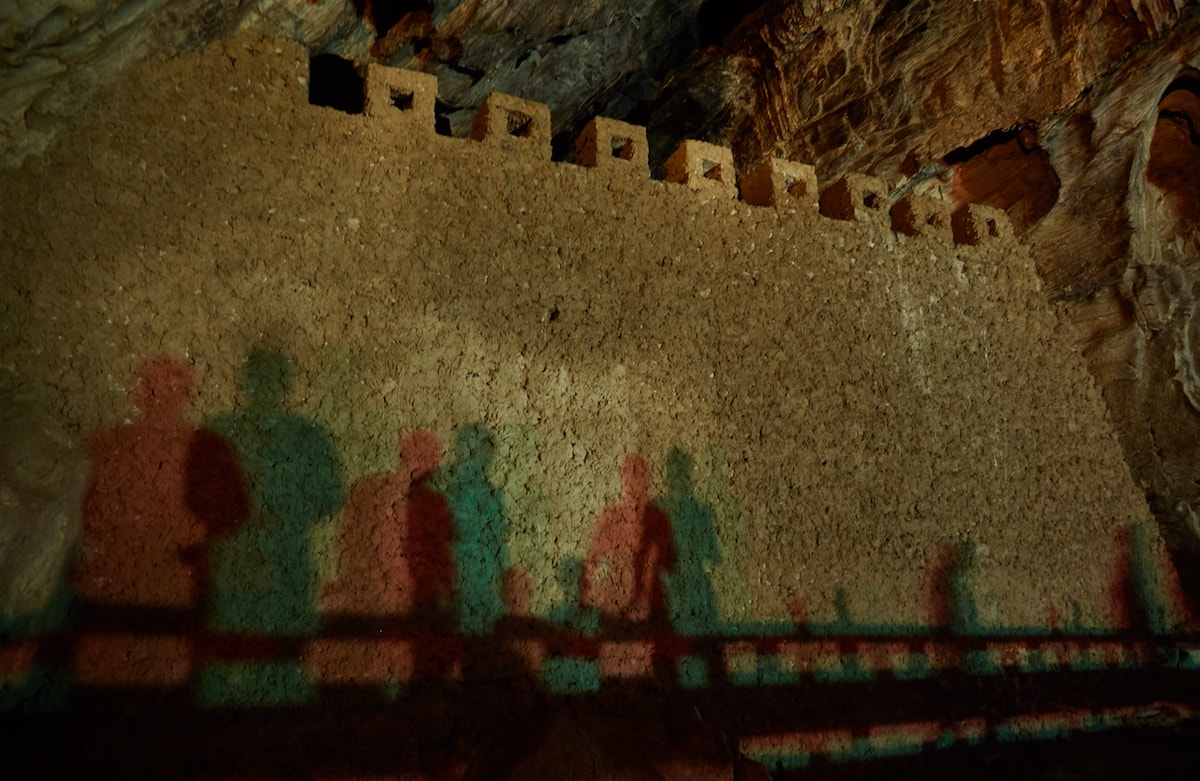
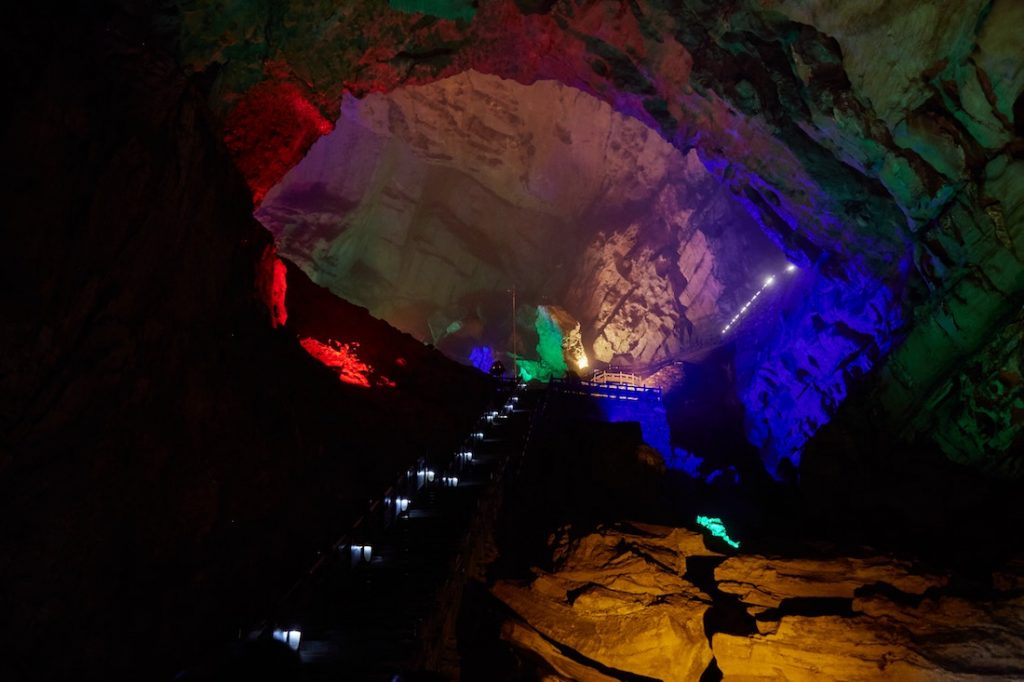

The entire cave is illuminated with colorful lights. While a tad overdone at times, at some point I almost felt as if I were walking through a futuristic spaceship. The dazzling colors also looked great in the parts of the cave with water.
Qiliang Cave’s most impressive section is what appears to be a lake right in the middle of the cavern. The rock formations are reflected in the still water below, making for perfect symmetry. Supposedly, though, the water’s depth is no more than just a few meters.

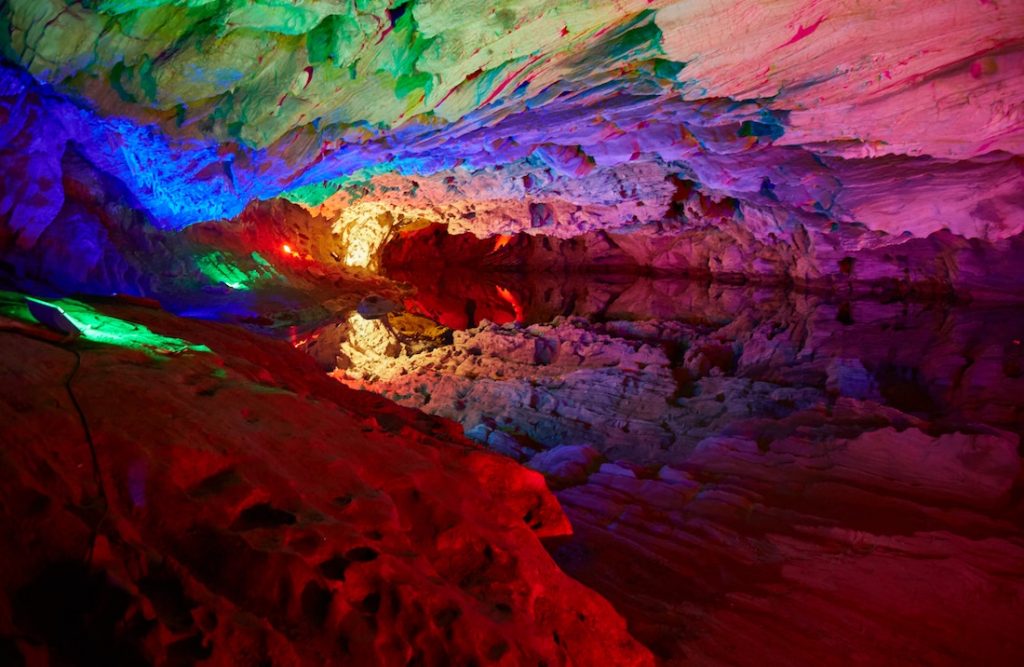

Qiliang Cave also has lots of what locals refer to as ‘stone corals.’ The rocks do, in fact, resemble corals that one might encounter in the ocean.
Looking at some of the formations, I couldn’t help but recall the caves of Malaysia’s Mulu National Park. But for whatever reason, Qiliang Cave hardly gets the attention it deserves.


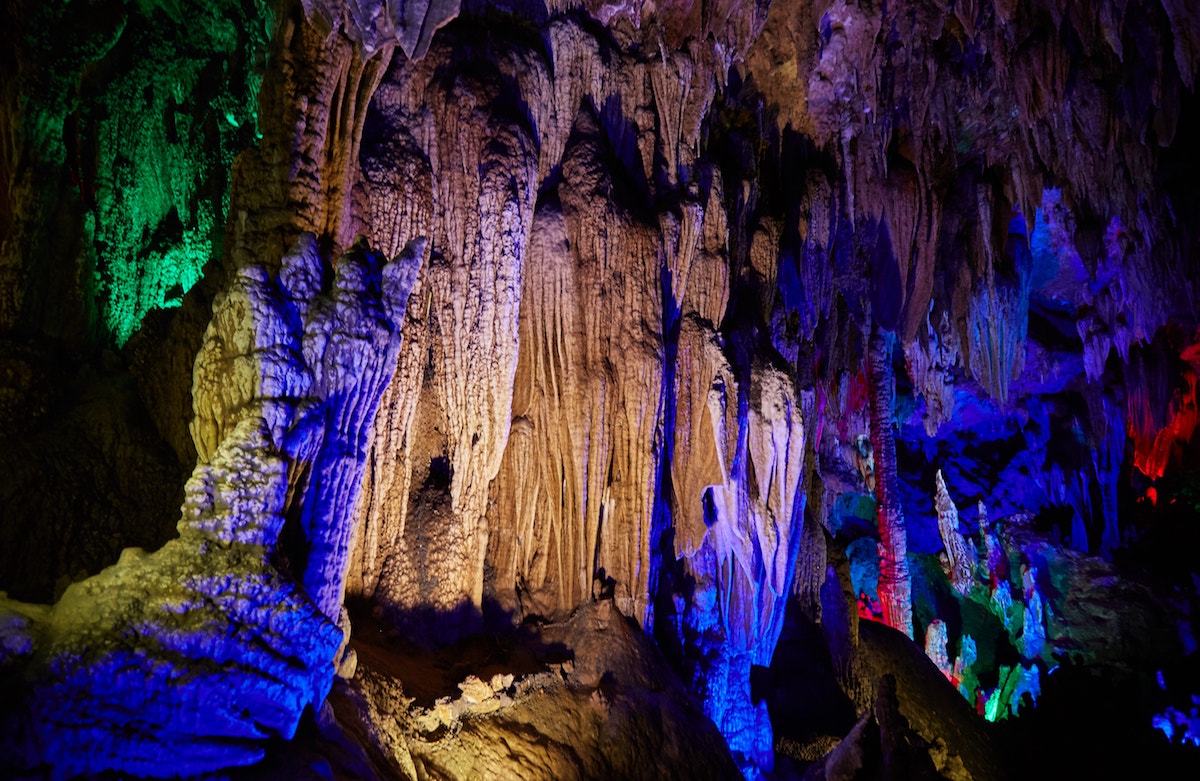


Impressively, some of the stalactites at Qiliang even form complete pillars which stretch from the ceiling down to the floor. And soon we arrived at a section called ‘View of Peach Assembly,’ named after a popular Chinese legend.
The story involves the Heavenly Queen Mother and her peaches. Supposedly, these peaches had the ability to grant immortal life. And today, locals say that some of the formations of Qiliang resemble these heavenly peach trees.
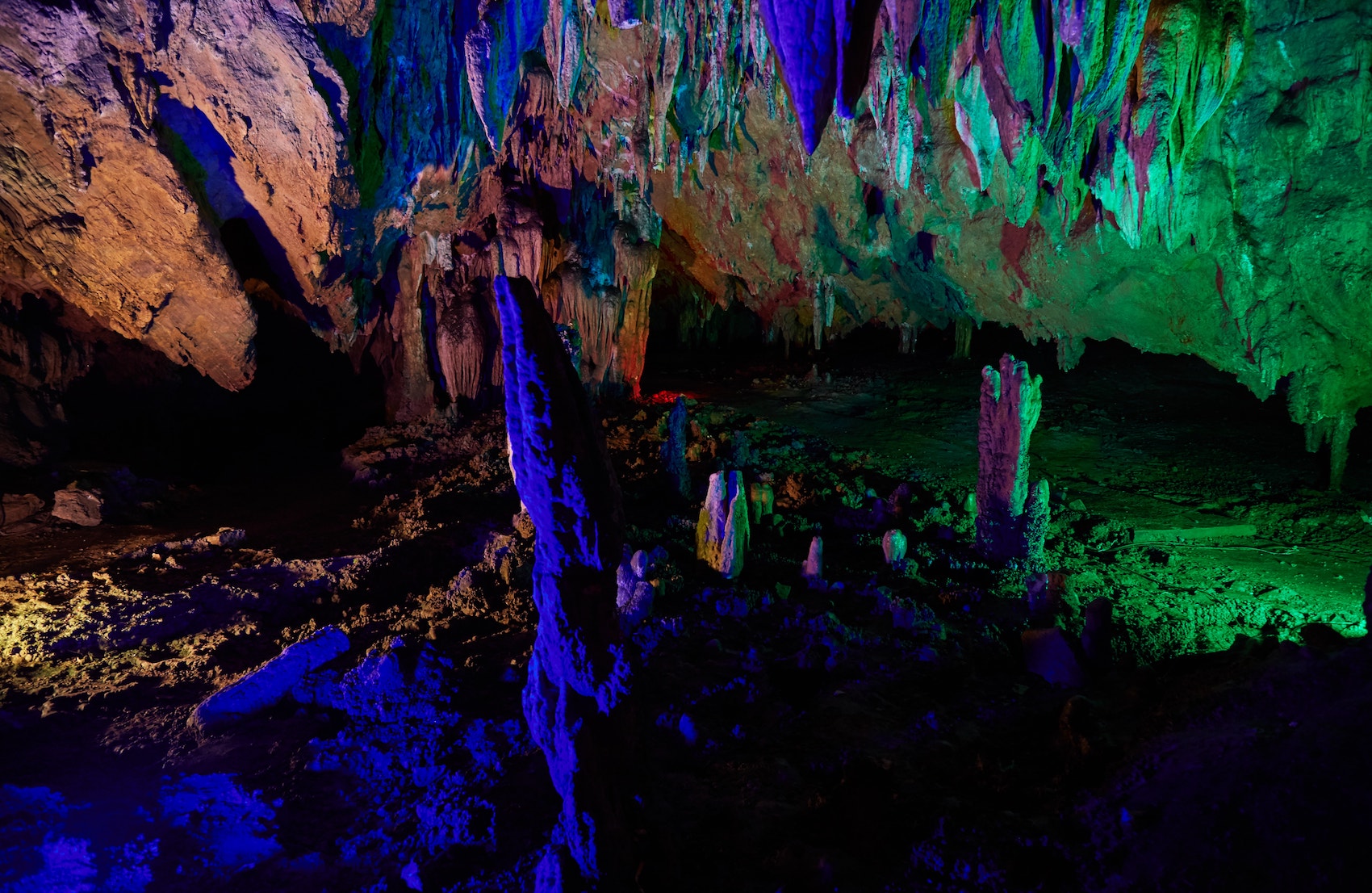
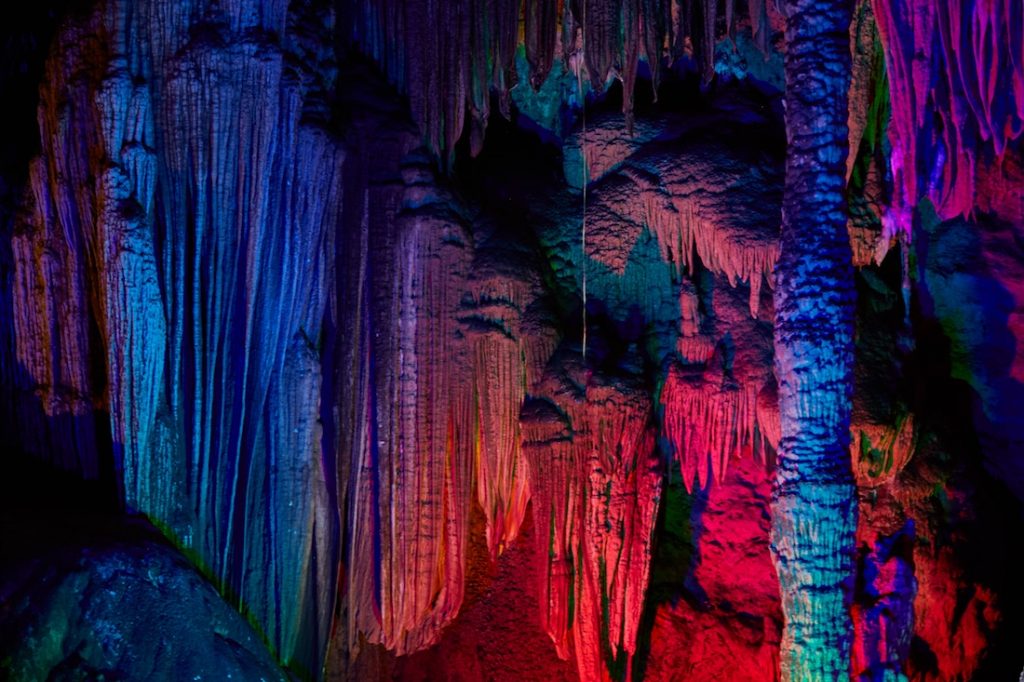
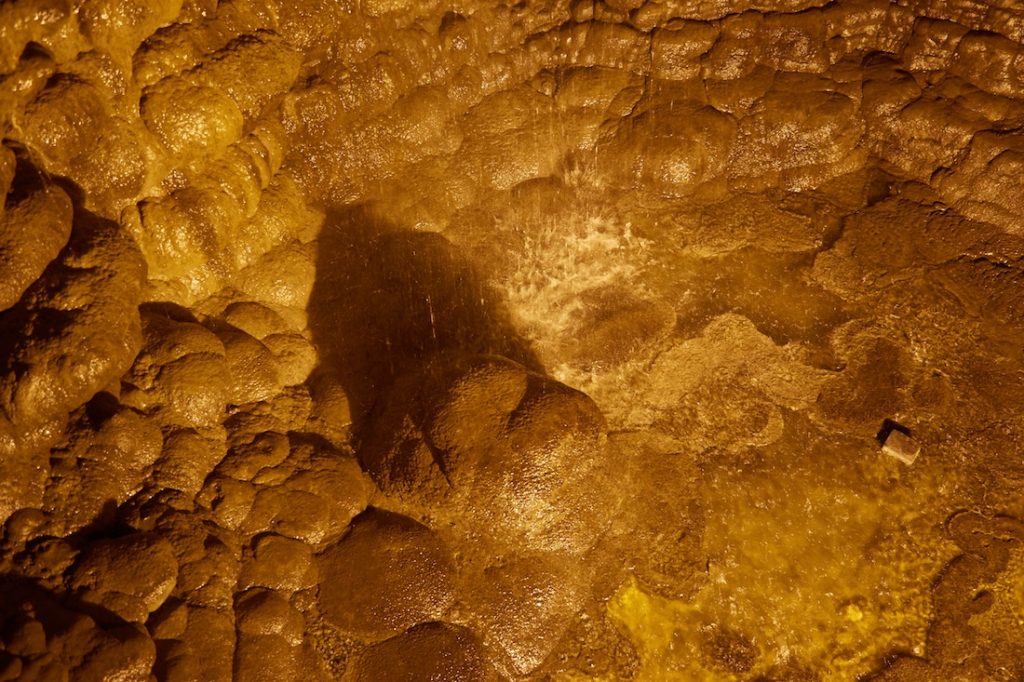

Elsewhere in the cave, the calcium carbonite stalagmites have been likened to Chinese pagodas. But near the end of the tour, we arrived at a large room which contained hardly any stalagmites at all. We carefully walked over the damp and smooth rock floor, trying our best not to slip. It was evident that at some point, long ago, lots of water once flowed through the area before eventually changing course.


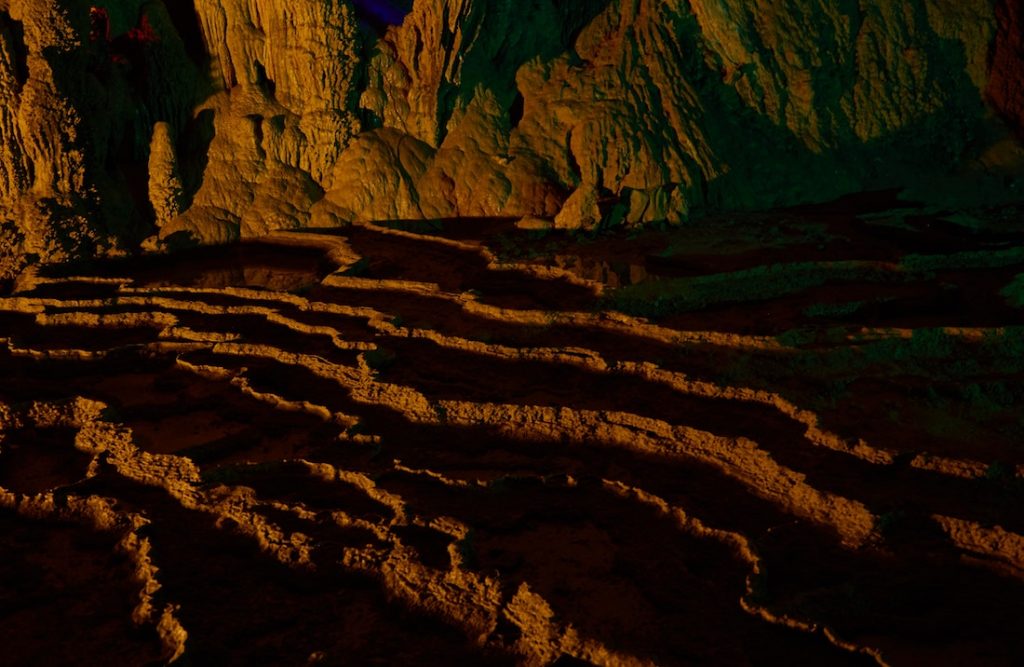
All in all, the tour lasted a little under 2 hours. And as I’d mainly been looking forward to the Southern Great Wall, I hardly had any expectations at all for this cave. Admittedly, had it not been included in the Fenghuang Ancient Town ‘through ticket,’ I probably wouldn’t have gone. But in the end, I must say that it made for an exciting visit.
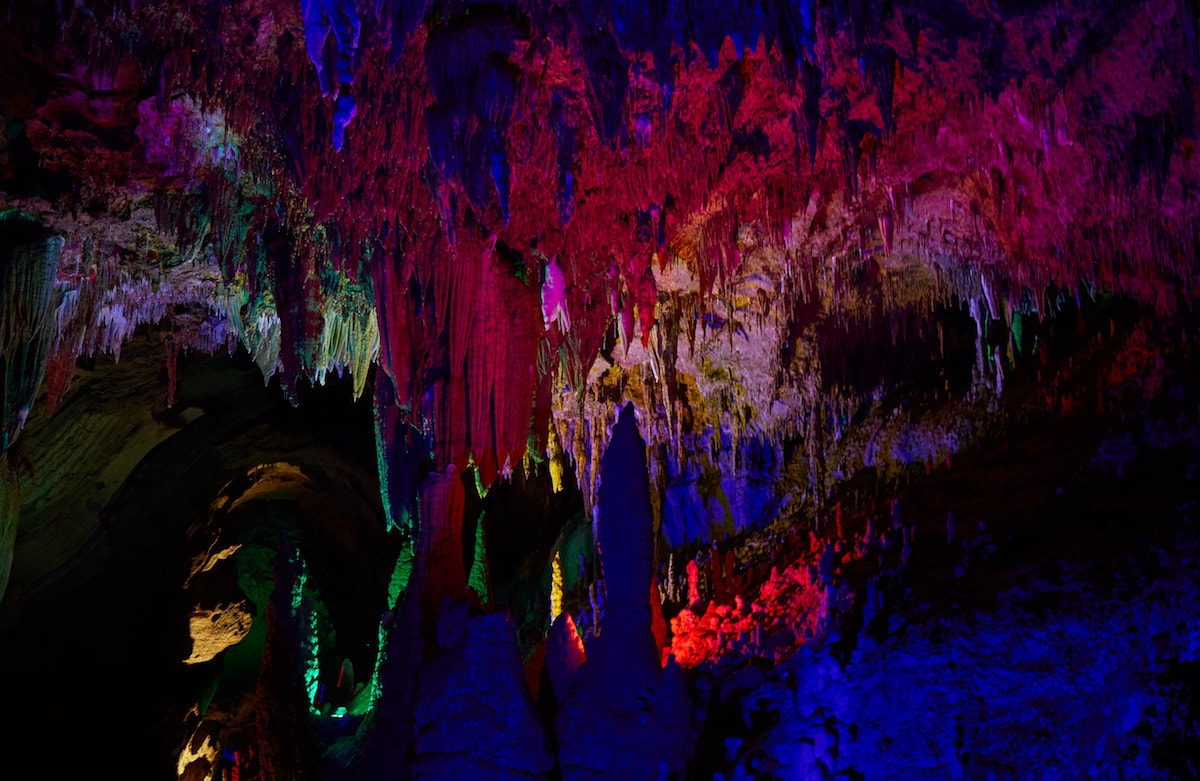
GETTING THERE: Qiliang Cave is directly accessible by public bus from Fenghuang which costs ¥3 RMB. You can hop on bus #1 at the bus stop along Fenghuang South Rd. to the west of Ancient Town. (This is the same bus that takes you to the main bus station.)
You can also board the bus from the Phoenix Grand Hotel. Note that if you want to see both Qiliang Cave and the Southern Great Wall in the same day, it’s best to get off at the Phoenix Grand Hotel when finished with the cave, as opposed to going all the way back to Ancient Town (read more below).
Without the Fenghuang Ancient Town ‘through ticket,’ admission to the cave costs around ¥60 RMB.
The Southern Great Wall
The Southern Great Wall was built between 1554 and 1662 during the Ming dynasty. And its original purpose was to serve as a dividing line between those of the Miao ethnicity who were either loyal or disloyal to the Ming.
The Miao are the 6th largest ethnic minority of China, and have historically habituated provinces like Hunan and Guizhou. And during the Ming dynasty, some of the Miao allied themselves with the Ming while others were determined to fight against them.
Notably, however, the term ‘Miao’ itself has historically been used by outsiders to refer to a few similar yet distinct minorities (such as the Hmong and Xong). It’s unclear, then, if the wall also separated subgroups of the Miao or if the barrier was of a purely political nature.
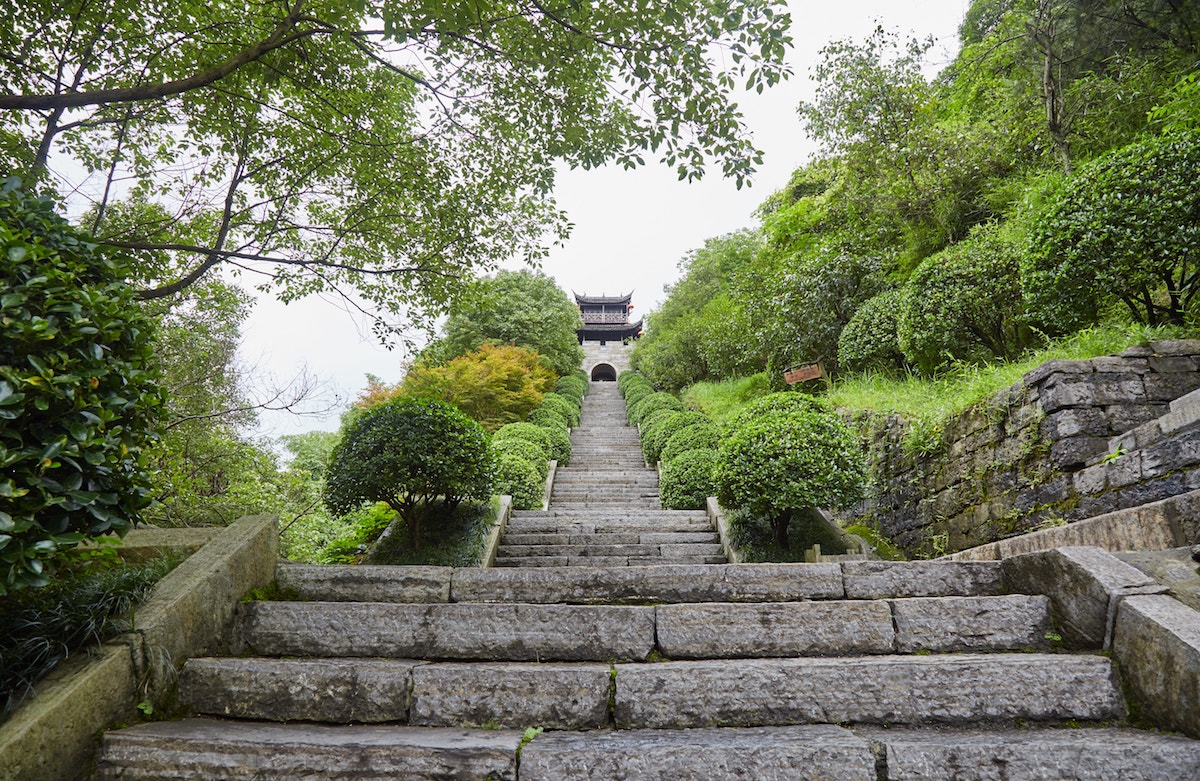
Passing the ticket booth, I walked up a flight of stairs to the main plaza. It was a spacious, open area surrounded by remnants of the original wall. Peaking over the edge, one can get a clear view of the local farmland down below.
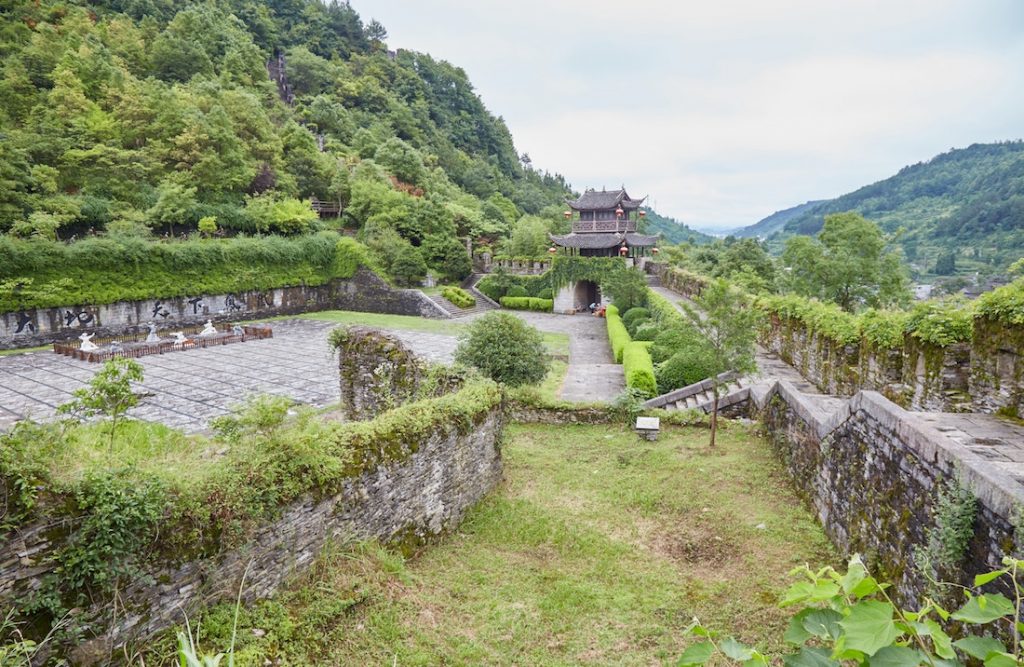

I took a walk up a staircase, which after a few minutes, took me back down to the other end of the same plaza. I arrived at an interesting-looking gate nearby a much larger, but mostly ruined, brick fortress.
The gate, in fact, reminded me of the East Gate Tower in Fenghuang Ancient Town. And from my understanding, they’re even part of the same original wall! That would explain the cannons by the windows aiming right out at central Fenghuang. Likewise, the Southern Great Wall features a few cannons of its own.

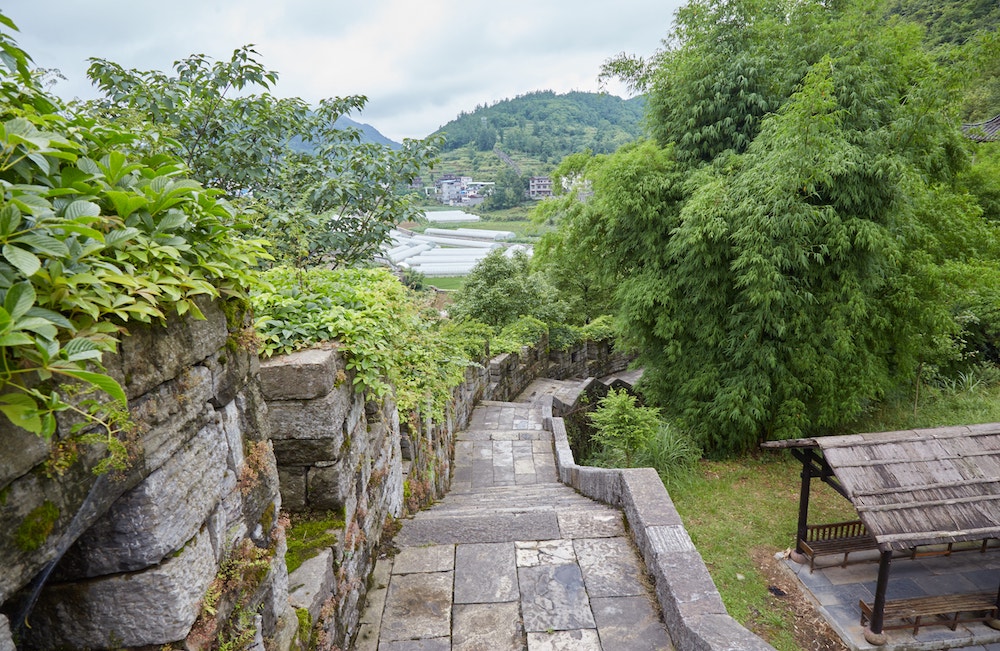
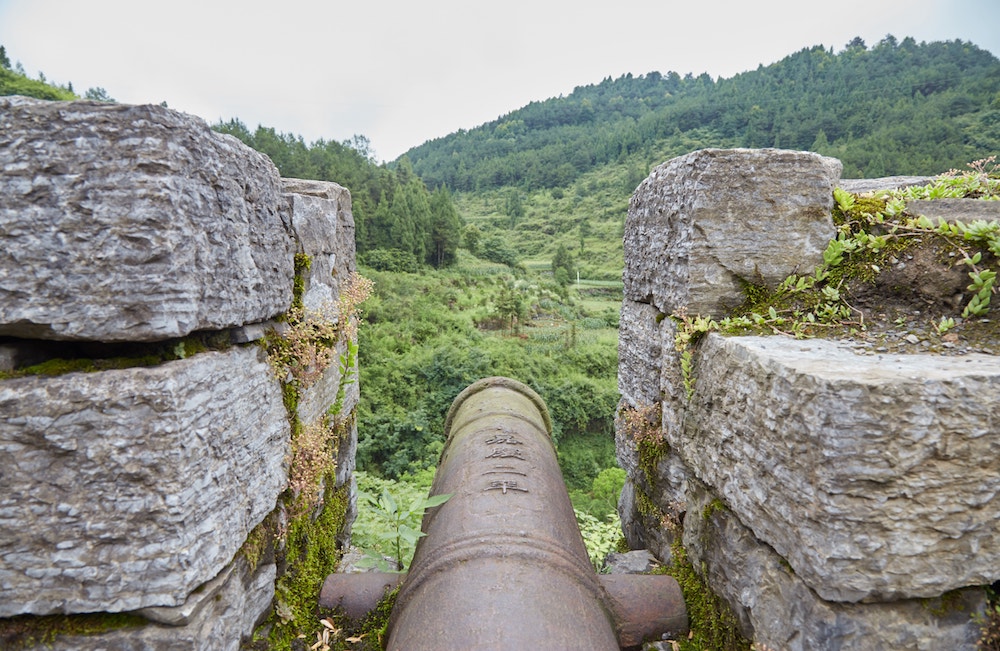

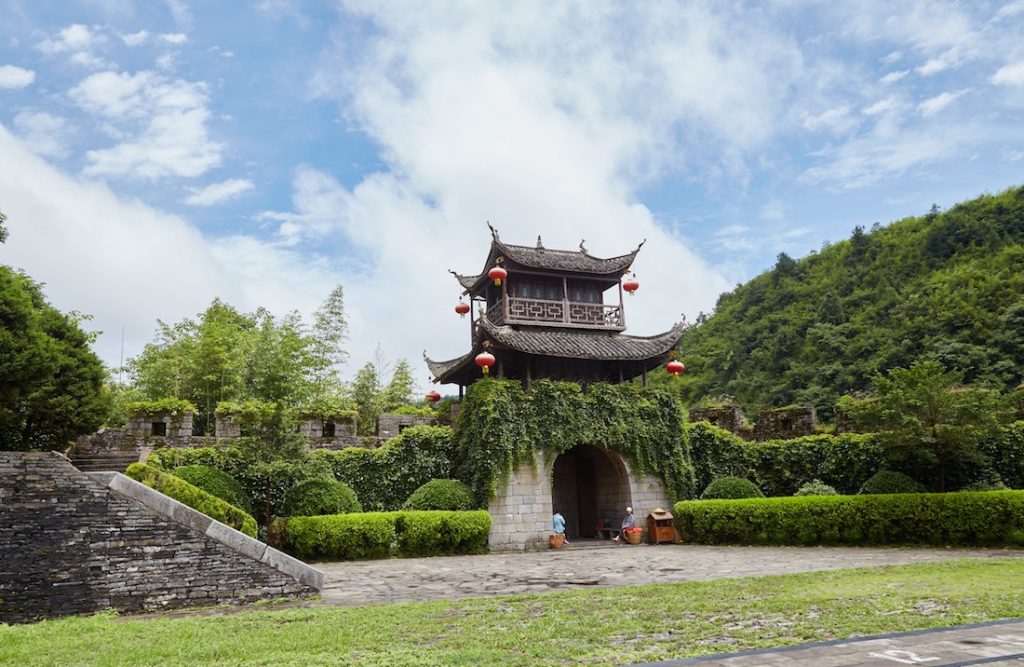
Not having had the chance to eat all day, I found a small kiosk selling some snacks, and I bought some biscuits in preparation for the steep walk up the mountain. But I had little idea of exactly where it would take me, or even how long a tour of the wall was supposed to take.
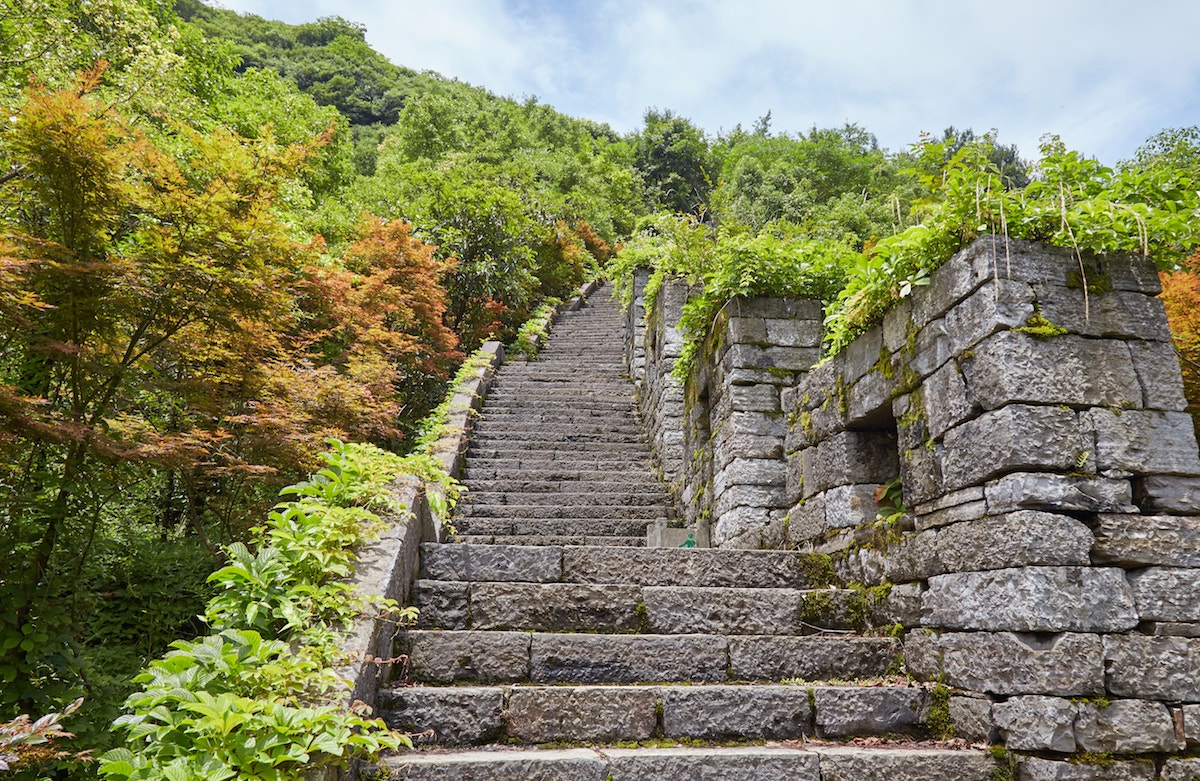
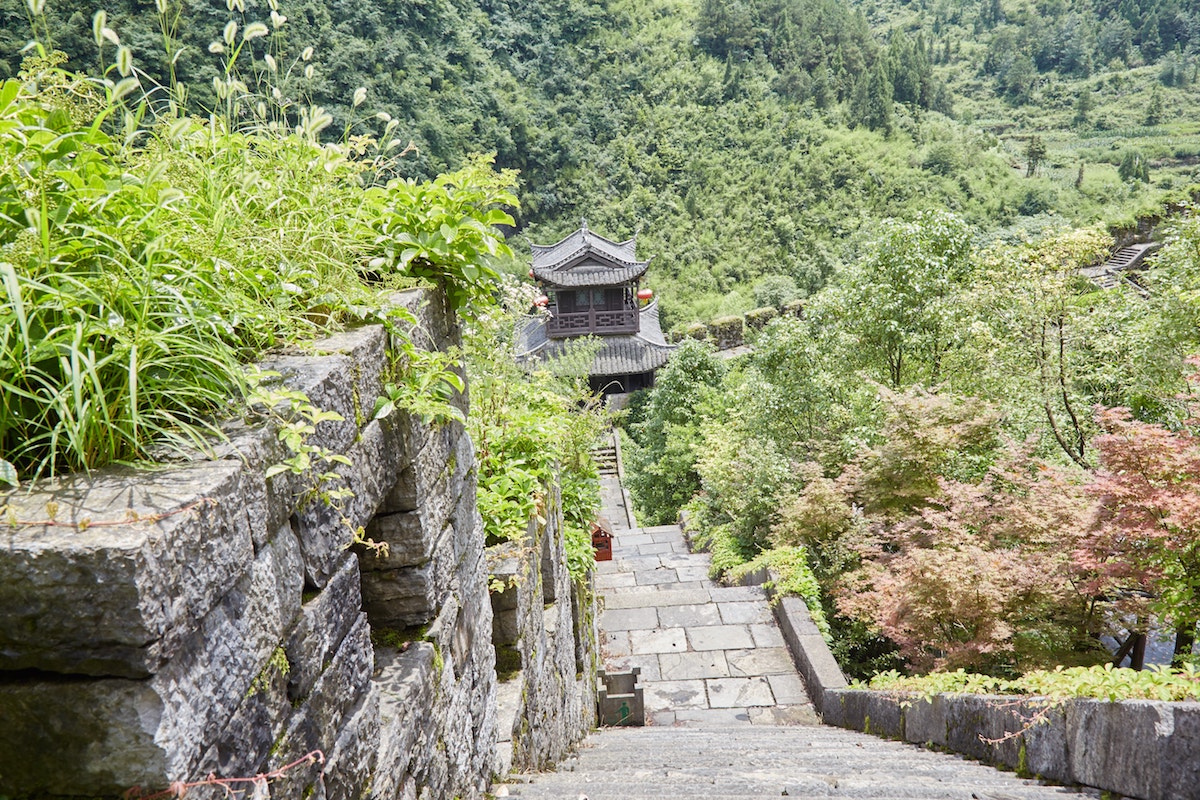
The higher I got, the smaller the main plaza began to appear. It was a hot day, and I took the occasional break to peak out through various holes in the brick walls. Supposedly, the wall was once patrolled by thousands of Ming troops at any given time.

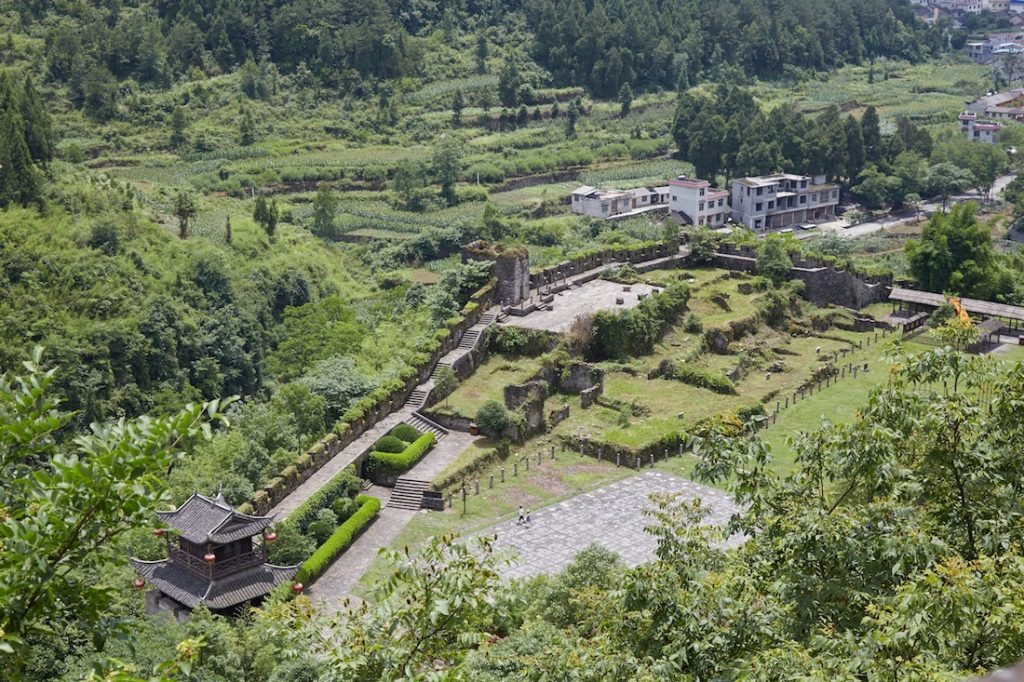

I finally arrived at a flat walkway, and thankfully came upon another small shop. I bought a bottle of (highly overpriced) water and continued on my journey. I had two options as to where I could go, but chose the staircase that took me even higher up the mountain.
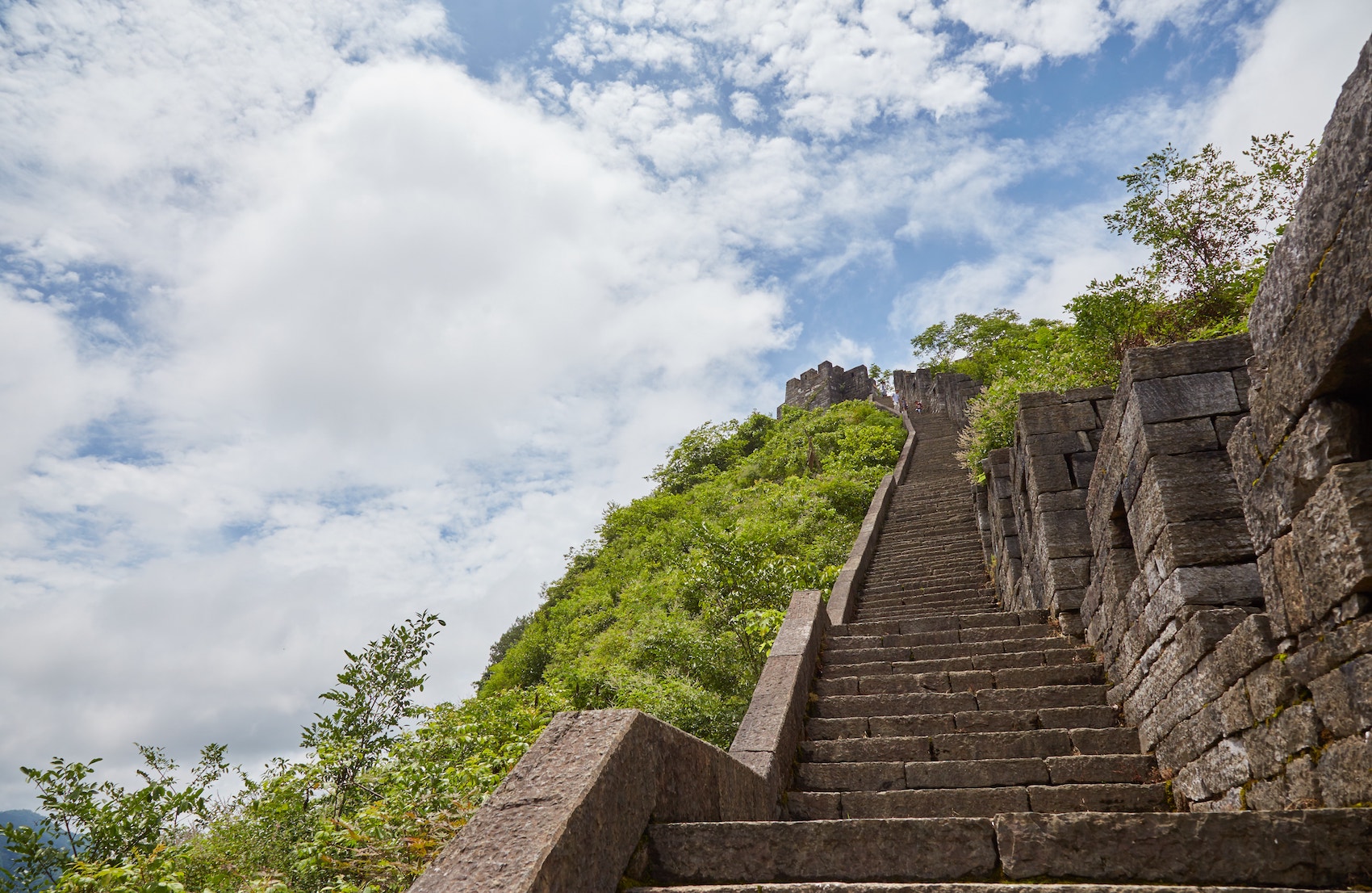
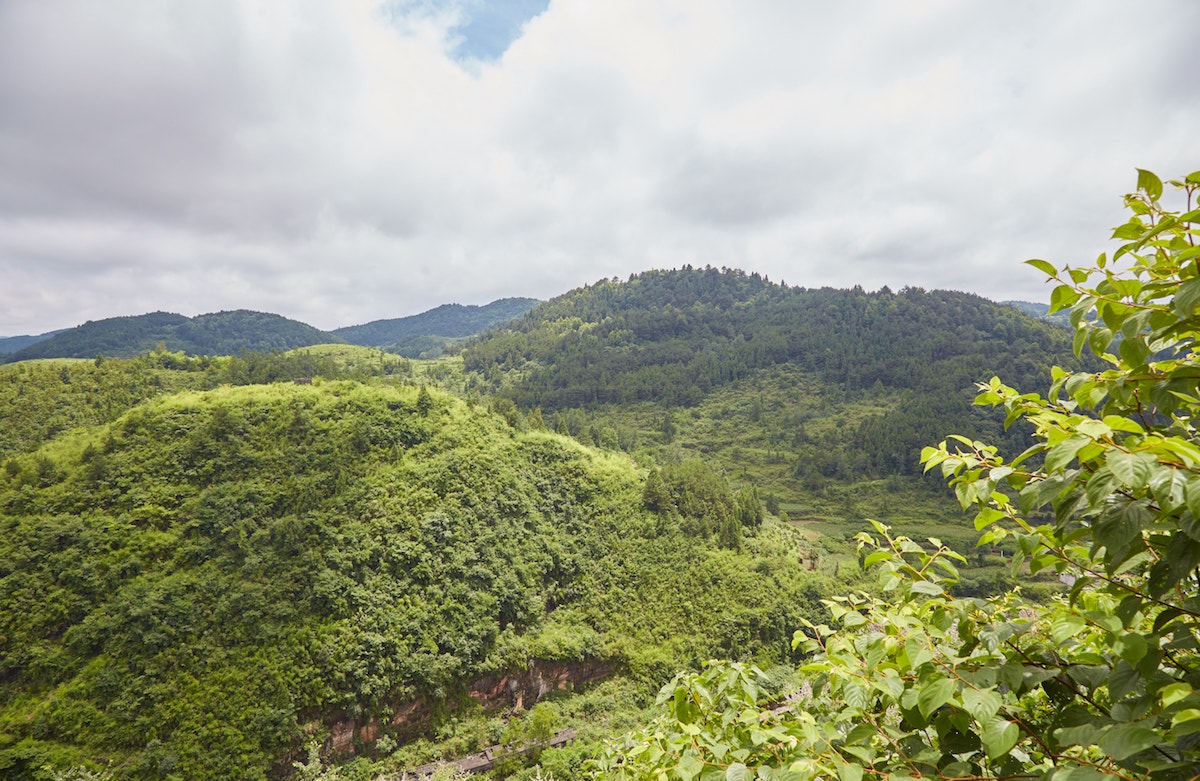
This higher section of the wall provided stunning views of the rural Hunan landscape. And occasionally, I’d encounter more lookout gates which offered a brief respite from the heat. But I was a little taken aback to find myself almost completely alone, especially considering the hordes of tourists in nearby Fenghuang Ancient Town. Although I really couldn’t complain.

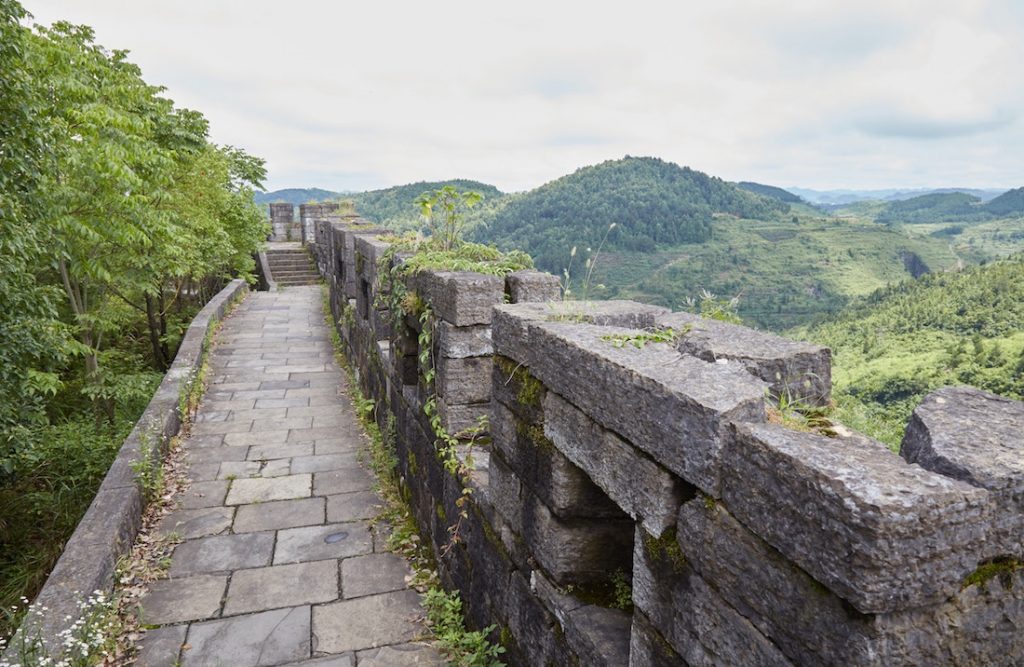

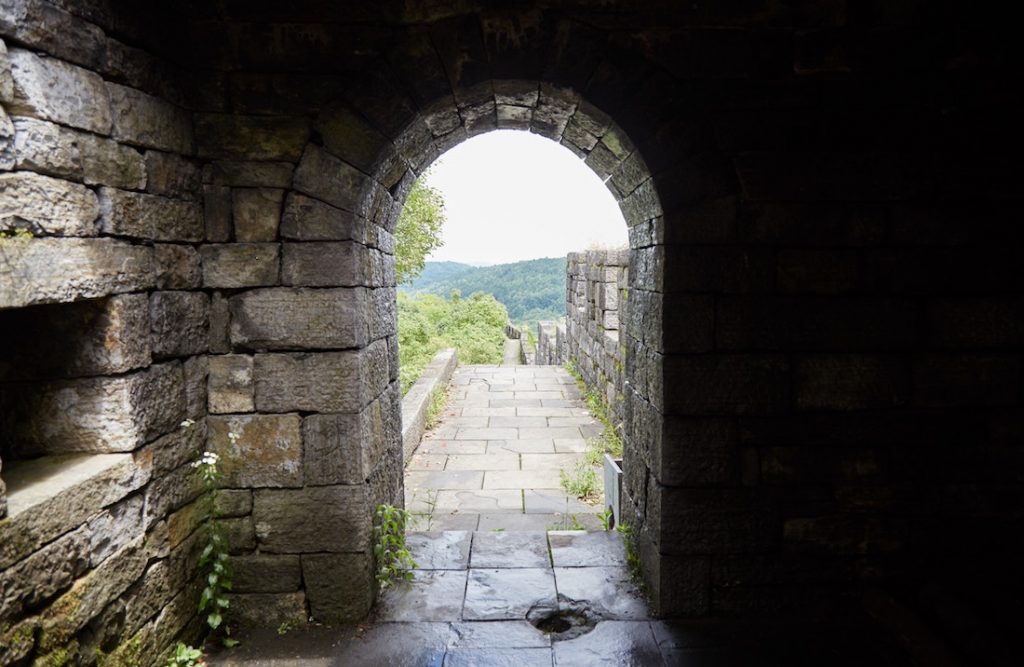


The wall took me up, down and back up again multiple times. And then I reached a point where the wall seemed to lead all the way off to nowhere. Before my visit, I’d read that the wall spans a total of 191 kilometers, stretching out as far as Guizhou Province! I was hesitant to proceed, lest I end up walking for days.
Luckily, though, I met a pair of foreign visitors coming from that direction. They assured me that everything is connected in a loop. It wasn’t until later that I learned that this touristic portion of the wall, renovated in 2001, is just around 1.8km in length.
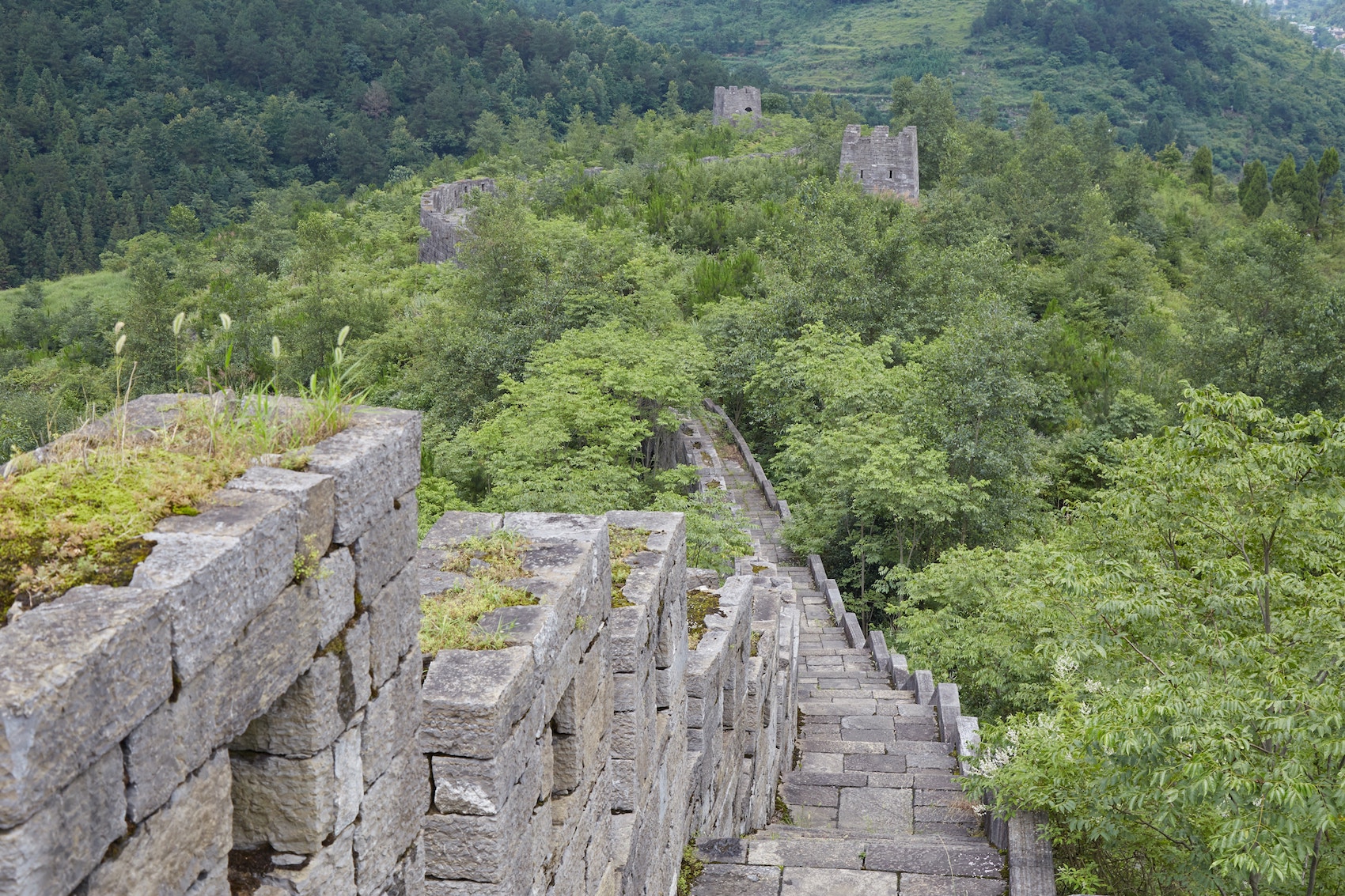
The wall curved like a snake through the lush greenery, taking me through more lookout towers and viewing platforms. Meanwhile, the clouds in the sky continued to shift, gradually adjusting the appearance of the distant hills.
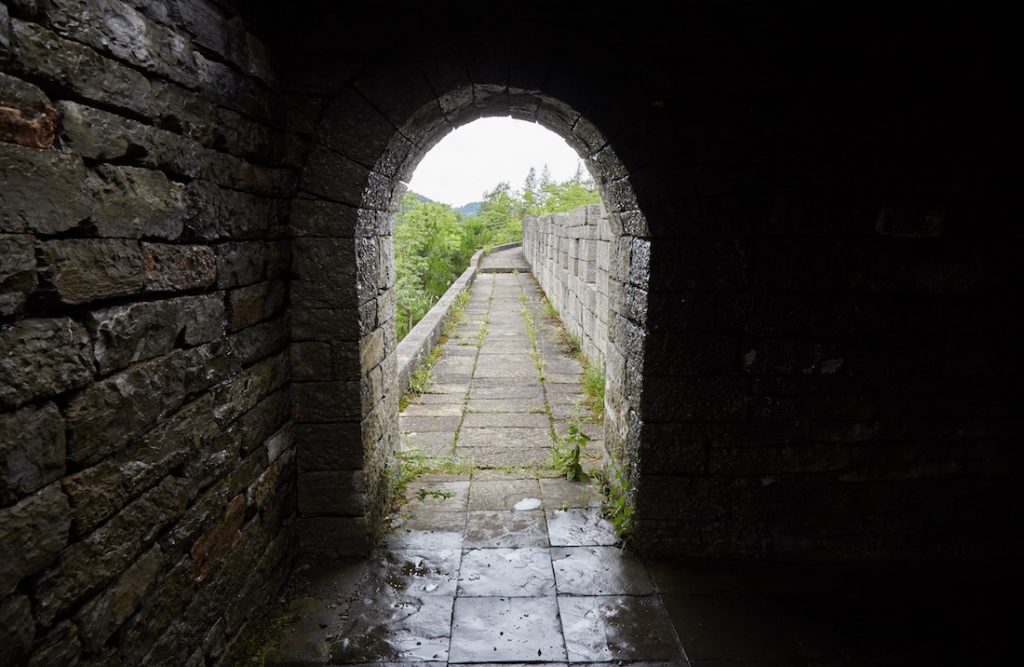


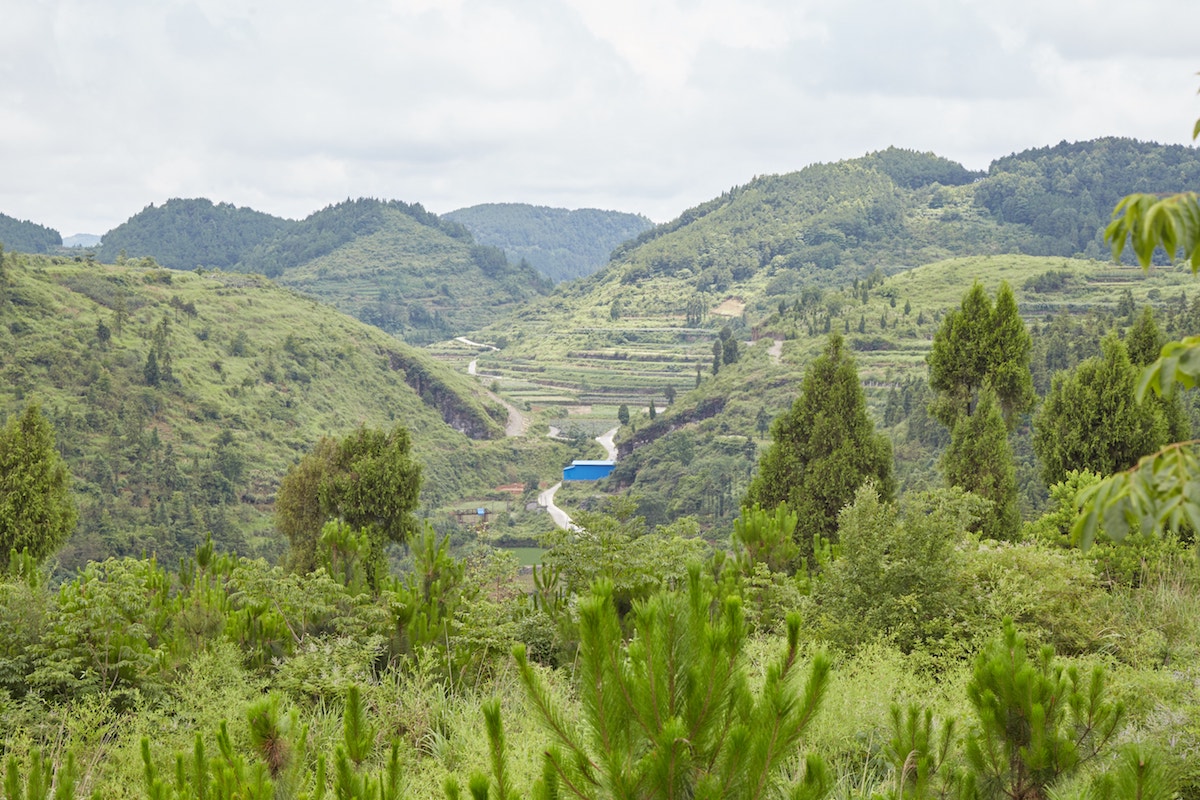
And, just when it seemed like I was about to get caught in a downpour, I’d completed the full loop. I walked past the snack kiosk and headed back down the original staircase leading to the main plaza.
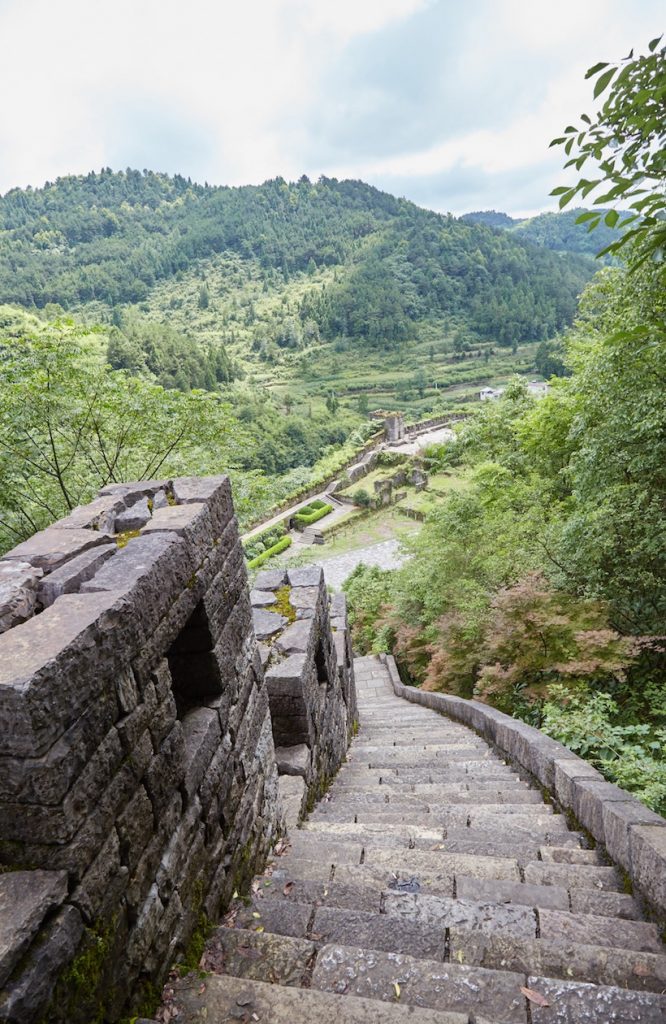
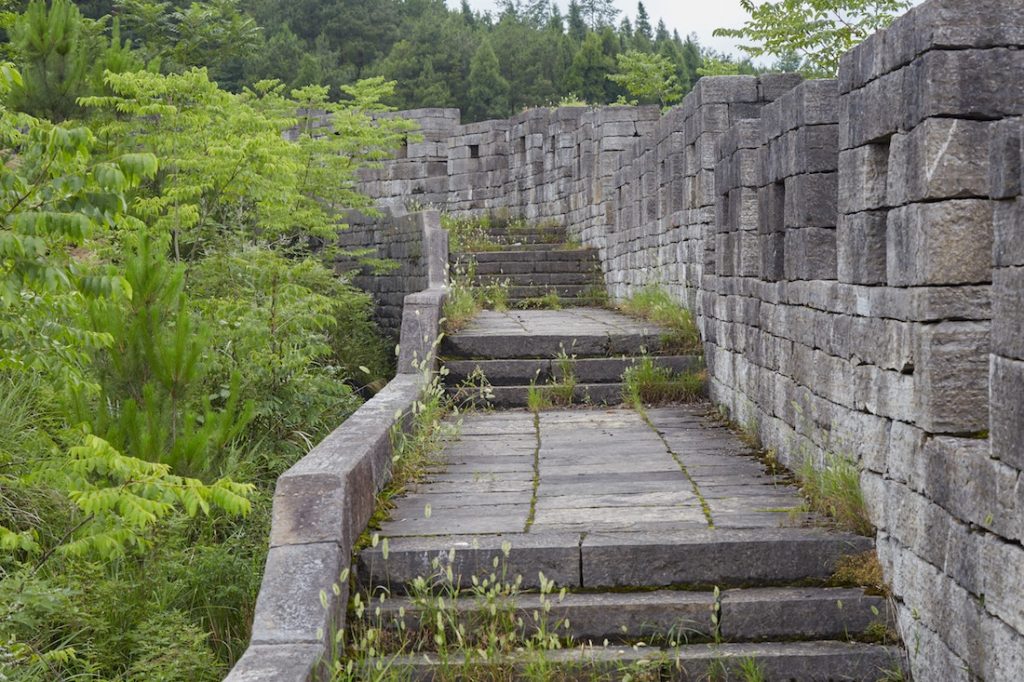
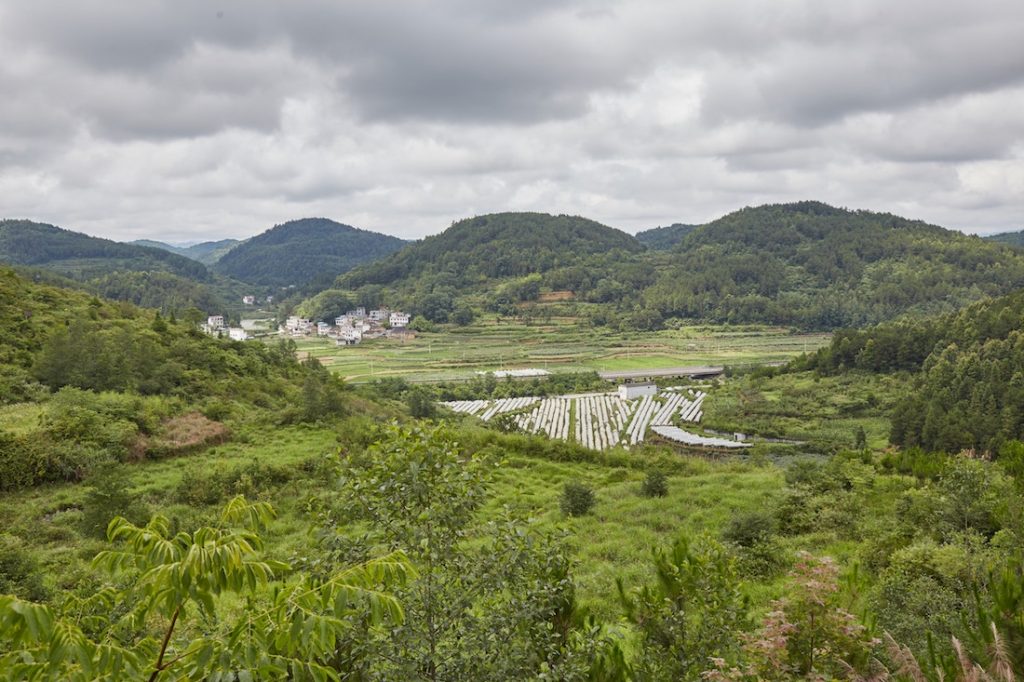
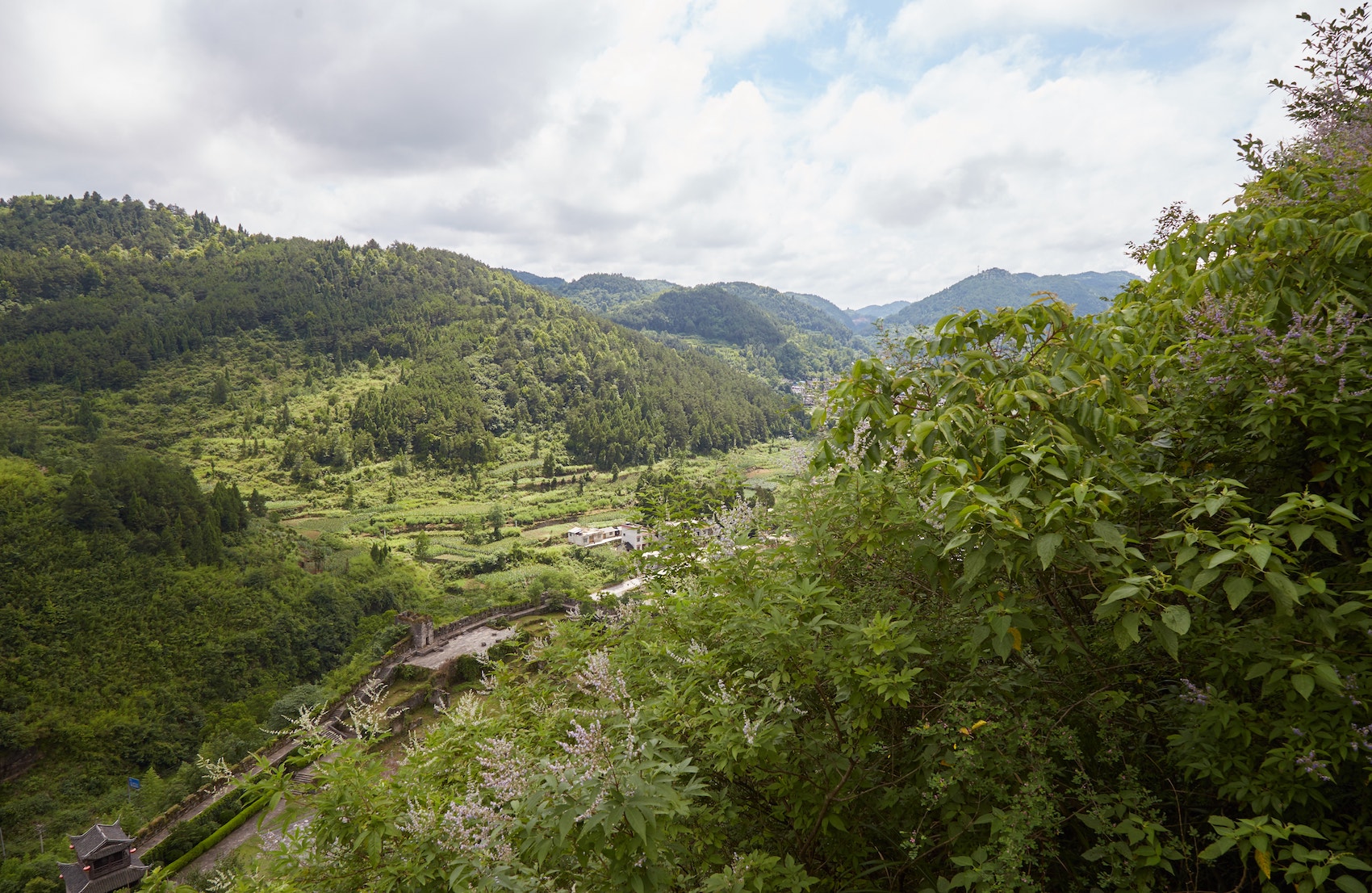
But I noticed something I hadn’t while I was down there. In fact, it’s a more recent addition that the Southern Great Wall is now famous for. Added in 2003, the wall now features the “World’s Largest Chessboard,” which is as big as 1,000 square meters. But after taking a closer look, it seemed not to be a chess board, but a board for the classical Chinese game of Go.
And on a platform nearby the plaza, there are even statues of Go competitors – likely famous ones (though who I have no idea). Every two years, in fact, the Southern Great Wall continues to host Go tournaments, with human participants playing the role of the pieces on the giant board!


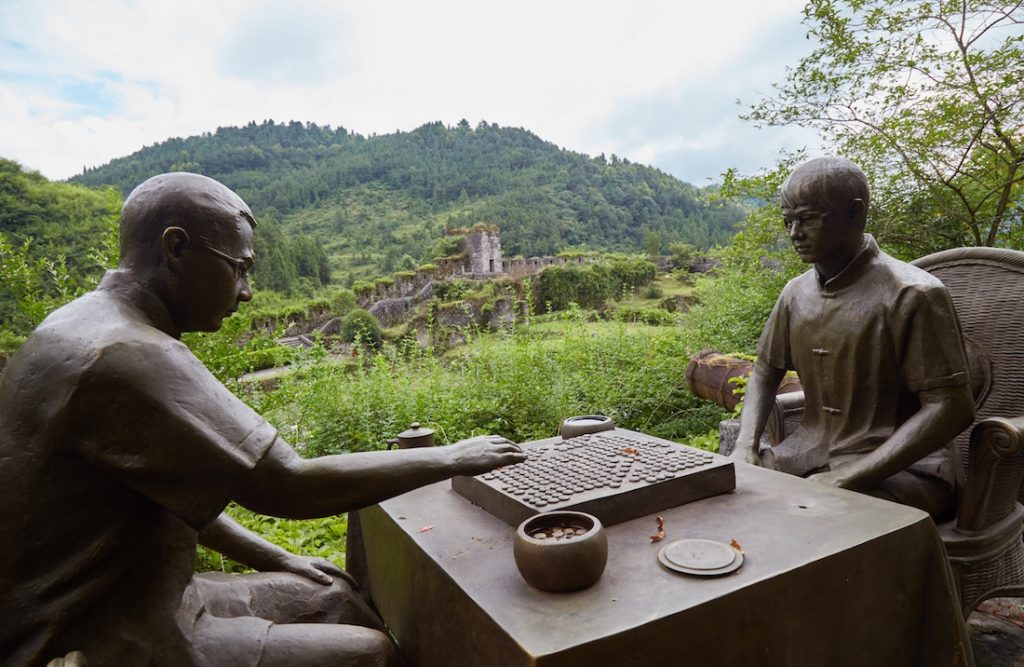
Can the Southern Great Wall compare to the famous Great Wall of China further up north? Honestly, I don’t know, as I have yet to visit northern China. But without a doubt, the wall is well worth a visit if you find yourself with a free day in Fenghuang.
GETTING THERE: Before my trip, my hotel receptionist informed me that there would be either buses or taxis which could take me directly from Qiliang Cave to the Southern Great Wall. While I may have just had bad luck, I waited around for awhile and saw neither. The only public or private transport available was a bus back to Fenghuang, and so I had no choice but to hop on.
I got off at the Phoenix Grand Hotel which is along a busy road in between the two destinations. From there I was told that I could catch a bus to the Southern Great Wall. But after 15 minutes of waiting, nothing ever came. And so I decided to hail a taxi.
Fortunately, after my visit to the wall was over, I managed to catch a minibus back to town by waiting along the main road outside the ticket gate. But this would only take me as far as the Shiqiaolong Bus Station (土桥垅汽车站), which is the secondary bus terminal of Fenghuang. From here I would need to take another regular-sized bus back to town.
In summary, traveling around these parts can be very unpredictable, and the language barrier certainly doesn’t help! Be sure to consult with with your hotel staff before planning your day out. And also consider a Plan B (or C) if not everything goes how you expect.
Additional Info
Fenghuang can be reached by bus from most other major cities in Hunan Province. In addition to Changsha and Zhangjiajie City, you can even ride there directly from Wulingyuan (right by Zhangjiajie National Forest Park). From Wulingyuan, though, there are just a couple of buses leaving each day.
The bus station is some distance away from the Ancient Town and it’s too far of a walk, unless you’ve packed very lightly. To get there, you’ll need to either take a bus or a taxi. Lookout for buses 1A or 6 to get you to the Ancient Town. As the Ancient Town itself is pedestrian only, you’ll get dropped off somewhere outside of it. If you don’t speak Chinese, be sure to have a VPN with Google Maps or download an offline map application like Maps.me.
Taxis should cost around ¥15 RMB, but you’re unlikely to get this rate with the drivers waiting around at the station. As soon as you arrive in Fenghuang, be prepared to encounter a group of taxi drivers all too eager to rip you off. It’s better to head out to the street and flag one down yourself.
There’s plenty of accommodation along the river. However, before my trip, I read about how noisy it would get at night due to all the bars and nightclubs (yes, some government officials had the bright idea to turn Fenghuang into a party town).
I stayed at Hemu House (formerly known as Fenghuang More Inn) near Phoenix Square which I would definitely recommend. It was very quiet at night, while it was an easy walking distance to most of the attractions in the Ancient Town area.
What’s more, is that it was also located nearby the edge of the Ancient Town, making it easy to walk into the modern city for a bite to eat or to do some shopping. It was also relatively nearby the bus stop to take you to the main bus station.
I must say, though, that as I walked along the riverside and saw hotel guests seated out on their balconies looking out over the water, I got a little jealous. Should I ever visit Fenghuang again in the future, I’d definitely give the riverside a shot.
As you may or may not be aware, a bunch of major web sites are completely blocked in China. This includes Google, YouTube and social media sites like Facebook. Not only can this be a huge annoyance, but not being able to access your Gmail account or use Google Maps could even cause major problems during your trip.
That is, unless, you have a VPN.
VPN stands for Virtual Private Network. Using one allows you to access the internet via servers in a variety of international locations. Therefore, when traveling in China, you can access the internet through a server in Taiwan or Hong Kong (or anywhere, really) and suddenly start using Google and social media apps like normal again.
I’ve tried out a couple of different companies over the course of multiple trips, and have found ExpressVPN to be the most reliable.
The actual use of VPN’s in China isn’t illegal in itself. However, the Chinese government will often make things difficult for certain VPN companies, and some services may stop working for you out of the blue. That’s why it’s important to go for the most reliable VPN, and ExpressVPN is widely regarded as the best to use in China.

Pin It!
